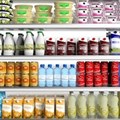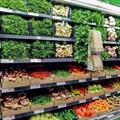"Modern manufacturing, particularly in the food industry, faces a tough and interesting challenge. We must meet consumer demands for quality and cost while simultaneously recognising the emerging realities of climate change and pollution that require more recycling and a more circular economy."

Stefan Fageräng, MD of Tetra Pak Southern Africa
"That’s why we’re continuing to work with existing and new partners in that value chain to explore the opportunities, capabilities, and capacities available to us in defining new systems and processes. And they’re coming up with some interesting new solutions," says Stefan Fageräng, MD of Tetra Pak Southern Africa.
Packages exist, says Fageräng, to protect food while making it safely available everywhere. Yet pollution and climate change have changed the context of modern food and beverage manufacturers.
“The circular economy’s regenerative approach means we reduce waste and use materials more, for longer, reducing the lifecycle impact of the packaging, processing, and servicing solutions,” he says. “Businesses in our industry have to focus on building low carbon – and ultimately carbon-neutral – economies. That means we must collaborate at every stage of the lifecycle of the carton pack, from sourcing to design, consumer awareness, collection, sorting, recycling, and to market.”
Transformational change challenges everyone in the value chain. Awareness about plastic pollution is driving the trend to societal and legislative pressures that promote rapid progress toward the circular economy.
Push for responsible packaging
Responsible food packaging and processing system suppliers are pushing for low-carbon, climate-neutral packages that are made entirely from renewable or recycled materials that are also fully recyclable to continue the stream. But they must do so in the context of keeping the nutritional and health qualities of the food safe while making it easy to get the food everywhere it needs to be to feed growing populations.
One of the ways companies are achieving this is through new closures.
“New closures are a direct result of the focus on marine litter,” says Fageräng. “We’ve invested heavily in this approach ourselves, we’ll spend €100 million a year for the next five years, making alternatives to on-pack plastic straws. We’re looking into a number of options, such as paper straws, tethered caps, and other drink systems.”
Paper straws are already appearing at some progressive restaurants and food and drink chains, and Tetra Pak has committed to start market trials this year and expects to industrialise paper straws to feed producers and the retail market.
Recycling plastic is a major part of the circular economy. But it can be difficult to incorporate recycled plastics into food packaging since there is a heightened risk of contamination. However, that doesn’t mean industry and other bodies aren’t seeking alternatives.
“We invest a great deal in R&D ourselves but we also watch what others do. National Geographic reported on some design students who are pushing the envelope,” says Fageräng. “They’re investigating advances such as 3D printing straws made of agar, which is made from seaweed, so it’s fully biodegradable and renewable. Another option they looked into is mycelium, from mushrooms. Those are interesting concepts and bold thinking that we keep a close eye on, among many others, because it is precisely the type of bold creativity that will power a sustainable future.”
Food safety
Fageräng says fully renewable packs have been available for some years now but the reuse of plastic and other materials, such as aluminium, have proved challenging to either repurpose or safely reinsert into the food packaging supply chain.
“Food safety is absolutely critical,” he says. “Issues like traceability and nutritional content continue to be regulated and observed by the industry for good reason. Yet we must also push to find new solutions that reduce our impact and that’s why we also strongly support awareness of new developments, whether or not they are already in production.”



















































